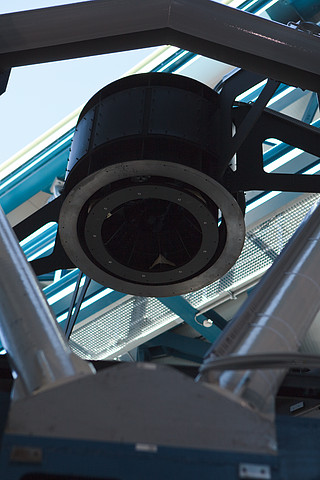The VST mirrors
 The optics of the VST Survey Telescope (VST) were designed at INAF (Italy) in collaboration with ESO. The telescope has two mirrors, the primary mirror (M1) and a smaller secondary mirror (M2), which reflect light from the sky down to the OmegaCAM camera. Both mirrors are made from a crystalline ceramic material called Sitall, specifically chosen for its resilience to thermal expansion.
The optics of the VST Survey Telescope (VST) were designed at INAF (Italy) in collaboration with ESO. The telescope has two mirrors, the primary mirror (M1) and a smaller secondary mirror (M2), which reflect light from the sky down to the OmegaCAM camera. Both mirrors are made from a crystalline ceramic material called Sitall, specifically chosen for its resilience to thermal expansion.
The VST primary mirror is the larger of the two, with a diameter of 265 cm and a thickness of 14 cm. The secondary mirror is less than half the size of M1 with a diameter of just 93.8 cm and a thickness of 13 cm. A computer-controlled active-optics system controls the shape of M1 and the position of M2. This technology preserves the optical image quality by keeping the mirrors perfectly positioned at all times.
The construction of the VST suffered several unfortunate mishaps, which were mostly the result of force majeure and outside the control of the builders. The first primary mirror was destroyed in 2002 while being transported from Europe to Chile. M2 was also damaged during shipping, albeit slightly, and had to be returned for repairs. Although a series of emergency actions was envoked to resolve these problems with minimum impact on the VST schedule, the telescope still suffered some delays. But now, with M2 repaired and the M1 replica mirror verified to have the outstanding quality of the original, the construction of the VST is finally complete. The telescope’s first light occurred in 2011.
Mirror Characteristics
|
|
M1 |
M2 |
|
diameter |
2650 mm |
938 mm |
|
hole |
600 mm |
130 mm |
|
thickness |
140 mm |
130 mm |
|
radius of curvature |
9509 mm (f/3.6) |
4374 mm (f/4.7) |